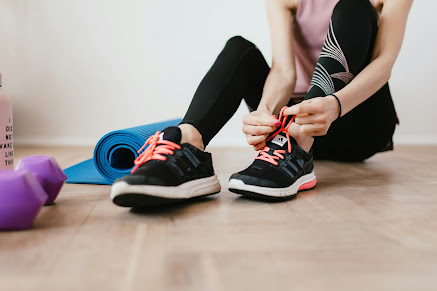Fitness and Exercise: A Comprehensive Guide to Health Benefits, Getting Started, and Improving Your Fitness
What Does it Mean to Be Fit?
Fitness encompasses various components that collectively contribute to our ability to perform daily tasks with vigor and alertness. According to the U.S. Department of Health and Human Services (HHS), physical fitness comprises five key elements:
1. Cardiorespiratory Fitness: This reflects your body's capacity to utilize oxygen efficiently, essential for overall health and vitality.
2. Musculoskeletal Fitness: This includes muscle strength, endurance, and power, crucial for mobility and functionality.
3. Flexibility: The range of motion in your joints, which impacts movement and posture.
4. Balance: The ability to maintain stability and prevent falls, vital for daily activities.
5. Speed: How quickly you can move, essential for various physical tasks.
These components collectively define our fitness level and translate into our ability to perform everyday activities comfortably.
Types of Fitness
A well-rounded exercise routine incorporates several types of fitness activities:
1. Aerobic (Cardiovascular) Exercise: Also known as cardio, this type of exercise elevates heart rate and breathing, improving cardiorespiratory fitness. Activities like brisk walking, running, cycling, and swimming fall into this category.
2. Strength Training: This involves exercises that build muscle strength and endurance, such as weightlifting, resistance band workouts, and bodyweight exercises.
3. Flexibility and Mobility: Activities like stretching and joint mobility exercises enhance flexibility and joint function.
4. Balance Training: Crucial for stability, especially among older adults, balance exercises reduce the risk of falls.
5. Rest and Recovery: Essential for allowing muscles to repair and strengthen after exercise, promoting overall fitness.
Health Benefits of Exercise
The benefits of regular physical activity extend beyond fitness:
Mood Enhancement: Exercise acts as a natural mood booster, aiding in managing symptoms of depression and anxiety.
Improved Sleep: Regular exercise contributes to better sleep quality and duration, promoting overall well-being.
Long-Term Health: Exercise supports brain health, bone density, muscle mass preservation, gastrointestinal function, and reduces the risk of chronic diseases like heart disease and diabetes.
Chronic Disease Management: Physical activity helps manage various health conditions like arthritis, high blood pressure, diabetes, and even cancer.
How to make money using smartphone check this
How Much Exercise Do You Need?
According to the HHS guidelines:
Aim for 150 minutes of moderate-intensity aerobic activity or 75 minutes of vigorous-intensity aerobic activity weekly.
Engage in muscle-strengthening activities targeting major muscle groups at least two days per week.
Nutrition Before, During, and After Exercise
Fueling your body with the right nutrients supports exercise performance and recovery:
Before Exercise: Consume easily digestible carbohydrates (e.g., banana, toast) for energy.
During Exercise: For longer sessions, replenish with carbohydrates to sustain performance.
After Exercise: Replenish with carbs and protein to aid recovery and muscle repair.
Tips for Getting Started and Staying Motivated
Starting and maintaining an exercise routine can be challenging:
Break It Up: Short bouts of activity count towards your weekly exercise goals.
Increase Slowly: Gradually increase the duration and intensity of your workouts to avoid burnout and injury.
Include 'Non-Exercise' Activity: Everyday activities like playing with kids or cleaning can contribute to your fitness.
Schedule It: Treat exercise as a priority by scheduling it into your daily routine.
Consider HIIT: High-Intensity Interval Training offers efficient workouts and can be tailored to all fitness levels.
Phone a Friend: Working out with a friend can boost motivation and make exercise more enjoyable.
Home Gym Equipment
Creating a home gym is convenient and cost-effective:
Start Simple: Begin with bodyweight exercises and invest in basic equipment like resistance bands or dumbbells.
Utilize Online Resources: Take advantage of online exercise programs that require minimal equipment.
Ultimately, achieving fitness is about finding activities you enjoy and incorporating them into your lifestyle. Regular physical activity not only improves your health but also enhances your overall quality of life. Remember, every small step towards fitness counts—so lace up those sneakers and get moving!
If you really want money Click here








.jpg)














0 comments:
Post a Comment
Thanks for your precious time spent with me. If it is useful please give your response